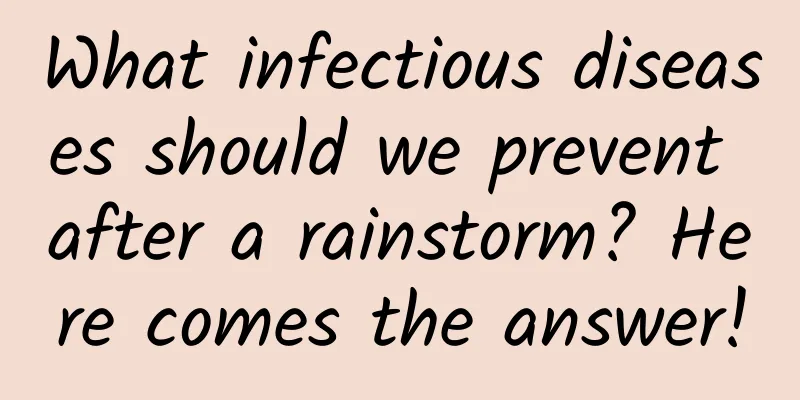A comprehensive review of BRAF pathway therapeutic drugs: Which drugs can help you?

|
Lung cancer, as a major disease that threatens human health, has always been the focus of medical research. With the advancement of medical technology, people are increasingly finding that lung cancer is not a single disease, but a complex disease caused by multiple gene mutations. Among these gene mutations, BRAF mutations have gradually come into our sight. So how much do you know about BRAF mutations? What therapeutic drugs targeting the BRAF pathway do you know? What drugs can help fight lung cancer? Do you know what BRAF mutation is in lung cancer? BRAF mutation, in simple terms, is a mutation in the BRAF gene in lung cancer cells. Under normal circumstances, the BRAF gene is responsible for regulating cell growth and differentiation. But once it mutates, it causes uncontrolled cell growth, which may lead to cancer. Although this mutation is not as common as several other gene mutations in lung cancer, many patients still face treatment challenges every year because of this mutation. BRAF V600 is the most common type of BRAF mutation. This mutation causes the BRAF protein to be continuously activated, thereby driving the proliferation and metastasis of tumor cells. For patients with this mutation, traditional treatments may have limited effects, so more targeted treatment strategies need to be found. Do you know what are the limitations of traditional chemotherapy for patients with BRAF mutation-positive lung cancer? Traditional chemotherapy mainly refers to the use of chemical drugs to kill cancer cells in order to achieve the purpose of treatment. It is one of the important means of treating lung cancer, but its effect is not satisfactory for patients with BRAF mutation-positive. The main mechanism of action of chemotherapy drugs is to kill cancer cells by interfering with the normal growth and division of cells. However, due to the particularity of BRAF mutant cells, they may be resistant to certain chemotherapy drugs, resulting in poor treatment effects. In addition, the side effects of chemotherapy drugs are also a problem that cannot be ignored. They may not only cause common reactions such as nausea, vomiting, and hair loss, but may also damage normal cells, thereby reducing the patient's quality of life. Therefore, for lung cancer patients with BRAF mutation-positive lung cancer, relying solely on chemotherapy may not be the best treatment option. Is the immunotherapy that has emerged in recent years suitable for patients with BRAF mutation-positive lung cancer? Let's put it this way. As an emerging treatment, immunotherapy has made significant progress in the treatment of lung cancer. It can achieve the purpose of treating lung cancer by activating the patient's own immune system to attack cancer cells. However, for lung cancer patients with BRAF mutation-positive lung cancer, the effect of immunotherapy may not be very ideal. This is because the tumors of patients with BRAF mutations tend to have a lower tumor mutation burden (TMB), that is, the number of genetic mutations in tumor cells is relatively small. Immunotherapy usually requires tumor cells to have a high TMB and produce enough antigens for the immune system to recognize and attack. Therefore, lung cancer patients with BRAF mutations may not benefit much from immunotherapy. Of course, this does not mean that immunotherapy is completely unsuitable for such patients. In some special cases, such as when patients also carry other high TMB gene mutations, immunotherapy may still have a certain effect. But in general, for lung cancer patients with BRAF mutation-positive lung cancer, doctors need to more carefully evaluate the effects and risks of immunotherapy. How do targeted therapies perform in the treatment of patients with advanced lung cancer who are positive for BRAF V600 mutation? What progress is worth noting? Single-target therapy, that is, treatment targeting a single target, has been a hot topic in the field of lung cancer treatment in recent years. For lung cancer patients with BRAF mutation-positive disease, some inhibitors targeting BRAF protein, such as BRAF inhibitors, have shown certain efficacy. BRAF inhibitors are oral small molecule inhibitors that can directly act on BRAF protein, blocking its abnormal activation, thereby inhibiting the growth and spread of tumor cells. In some clinical trials, BRAF inhibitors have shown therapeutic effects on BRAF mutation-positive lung cancer patients, prolonging their progression-free survival and improving their quality of life. However, single-target therapy also has certain limitations. First, due to the complex pathogenesis of lung cancer, the efficacy of a single drug may be limited. Second, long-term use of a single drug may lead to the development of drug resistance, which gradually reduces the effectiveness of treatment. Therefore, although single-target therapy provides a new treatment option for patients with BRAF mutation-positive lung cancer, it still requires further research and optimization by scientific researchers. As the name implies, dual-target therapy is to treat two targets at the same time. For patients with BRAF mutation-positive lung cancer, dual-target therapy usually refers to the simultaneous use of inhibitors targeting the BRAF and MEK pathways. The combination of BRAF inhibitors and MEK inhibitors is such a typical combination. BRAF inhibitors are highly selective BRAF inhibitors that can directly block the activity of BRAF protein. MEK inhibitors are MEK1/2 inhibitors that can block the signal transduction pathway downstream of BRAF. When these two drugs are used in combination, they can work synergistically to more comprehensively inhibit the growth and spread of tumor cells. Several clinical trials have also confirmed that BRAF inhibitors combined with MEK inhibitors have a good therapeutic effect in treating patients with BRAF mutation-positive lung cancer. Of course, dual-target therapy is not perfect. It may bring some side effects, such as rash, diarrhea, etc. When using this treatment regimen, doctors need to closely monitor the patient's response and adjust the treatment regimen in time to ensure the safety and effectiveness of the treatment. What do you think patients should pay attention to when choosing a treatment plan? When choosing a treatment plan, patients need to pay attention to the following aspects: First, you need to have an in-depth discussion and evaluation with a professional team of doctors. The doctor will develop the most suitable personalized treatment plan for the patient based on the patient's specific condition, physical condition, and gene mutation type. Secondly, you need to understand the potential risks and side effects of the treatment. For example, although dual-target therapy has significant therapeutic effects, it may also bring some side effects, such as rash, diarrhea, nausea, vomiting, etc. These side effects may have a certain impact on the patient's quality of life. Therefore, when choosing a treatment plan, patients should discuss the risks and possible impacts of side effects in detail with their doctors so that they can be mentally prepared and take coping measures. In addition, patients also need to consider the cost of treatment options. For example, targeted therapy, especially dual-target therapy, usually requires the use of expensive drugs and may require long-term treatment. Therefore, patients need to understand the cost of treatment options and make reasonable decisions based on their own financial situation. Finally, during treatment, patients need to closely monitor their physical condition and promptly report any discomfort or abnormalities to the doctor. The doctor will adjust the treatment plan in a timely manner based on the patient's response and treatment effect to ensure the safety and effectiveness of the treatment. Summarize: In short, the development of BRAF pathway therapeutic drugs has brought new treatment options and hope to patients with BRAF mutation-positive lung cancer. As the medical community has a deeper understanding and continuous exploration of the pathogenesis of lung cancer, I believe that more innovative and effective treatments will be introduced in the future, bringing better quality of life and prognosis to patients. Expert introduction Dong Xiaorong Chief Physician Professor Doctoral Supervisor Deputy Director of Oncology Department/Teaching and Research Section, Union Hospital, Huazhong University of Science and Technology Director of Thoracic Oncology Department, Cancer Center, Union Hospital, Huazhong University of Science and Technology Director of Chinese Society of Clinical Oncology (CSCO) Vice Chairman of the Lung Tumor Committee of the Chinese Medical Education Association Member of the Standing Committee of the Lung Cancer Expert Committee of the Chinese Anti-Cancer Association (CACA) Member of the Standing Committee of CACA Chinese and Western Medicine Integration Committee Standing Committee Member of CSCO Tumor Biomarker Committee Standing Committee Member of CSCO Immunization Expert Committee Standing Committee Member of CSCO Vascular Targeted Therapy Expert Committee Standing Committee Member of CSCO Patient Education Expert Committee Member of CSCO Non-Small Cell Lung Cancer Expert Committee Chairman of the Tumor Immunotherapy Committee of Hubei Anti-Cancer Association Approval code: TML0021575-54481, valid until 2025-04-18, expired information will be deemed invalid |
<<: Fetal ultrasound screening that pregnant mothers should not ignore
Recommend
Treatment of hydrosalpinx with contrast imaging
Hydrosalpinx is a problem that many of our female...
Health Science | Whenever you take medicine, eating this fruit will affect the efficacy of the medicine
Now is the season for grapefruit Grapefruit also ...
Bleeding in early pregnancy like menstruation
Bleeding in early pregnancy is like menstruation....
How to clean the vulva correctly?
The importance of the vulva to women is self-evid...
How to fertilize peppers? How often should peppers be fertilized?
Pepper is a common plant in our lives. Many peopl...
Causes of abdominal pain during menstruation in women
Abdominal pain during menstruation is a common ph...
Embarrassing pictures of menstrual leakage
My period comes every month, and the most annoyin...
[Medical Q&A] What is the difference between prohibited, taboo, and cautious use in drug instructions?
Planner: Chinese Medical Association Reviewer: Zh...
Your children can’t do these sports!
Many outstanding athletes once again demonstrated...
What is the reason for less menstruation?
Under normal circumstances, a woman's monthly...
How to cure abnormal leucorrhea?
Abnormal leucorrhea is a problem that many women ...
Why do young women often get tired of married life after giving birth?
Usually, women's body and mind have not fully...
How to stop coughing quickly during pregnancy
Many people have experienced coughing. We all kno...









